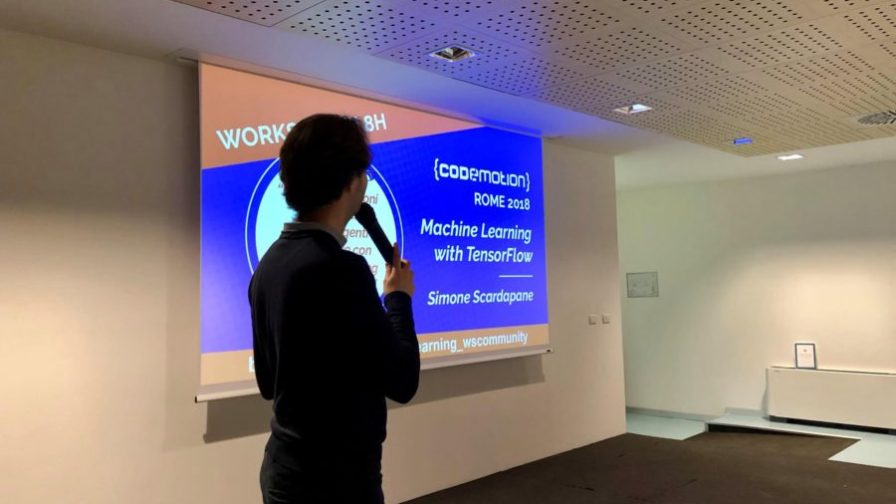
Simone Scardapane is a very talented AI and machine learning researcher and developer. He gave us some precious suggestions to simplify TensorFlow-based development.
Hello Simone. As we know, Tensorflow is one of the most popular deep learning libraries. Recently you had a chance to present your talk entitled: “Eager execution – interactive codelab, a low-level interface to write TensorFlow code in a simpler and more intuitive way”. Could you tell us something more about it?
For some time I’ve been working on Google technologies, which are constantly growing and are perhaps the most difficult to approach just because of the immense growth. TensorFlow is the main tool for machine learning in Google and the talk I gave described a recently released new approach to the framework, much simpler and more dynamic.
Are you going to prepare any other talks related to this topic?
In August I held an introductory workshop for DevFest Levante, a conference organised by GDG Bari. I realised that in such a large framework, the ideal is more than showing the interfaces and the full potential, it’s more useful to present people with a guided path, so as to facilitate their orientation and understanding. In the next year I’d like to experiment with machine learning on the web or Android or Raspberry-Pi. At Codemotion Milan, I’ll give a talk on TensoFlow.js, as it interfaces with JavaScript, so that everything runs inside the browser.
How was the experience of holding a codelab within a community?
Certainly different from a classic conference. I thought a lot about how to deal with the topic, programming together line by line, not taking anything for granted. I received very interesting feedback from the participants.
Let’s change topic now. For those who don’t know you, could you tell us a bit about yourself?
I’m a researcher at Sapienza University and I deal with machine learning. In my free time, I actively participate, including as a speaker, in some communities on this topic. I also manage the Machine Learning Data Science community and a cultural association, the Italian Association for Machine Learning, to promote some initiatives.
I studied computer engineering and then I did my Master’s degree in artificial intelligence and robotics. I worked a bit as a developer for a company in Rome, but I realised that my passion was research, which is why I decided to do a doctorate degree before becoming a researcher for Sapienza. When it comes to my hobbies, I love reading, watching movies and TV series.
Why did you decide to become a researcher?
This field of research is very special, as anyone who’s got involved in it can confirm. I really like working alone, both for theoretical and practical research. I wanted to stay in Italy, because I love Rome and choosing this kind of career was a wise choice.
In the first year of my studies, I mostly read foreign books and research. Now the situation has improved and it’s possible to find some good material in Italian, both articles and books. I also participate in a couple of conferences a year, especially for networking and getting to know other developers interested in machine learning. The main source of information for me is the internet, thanks to the incredible speed of publication on a global scale.
